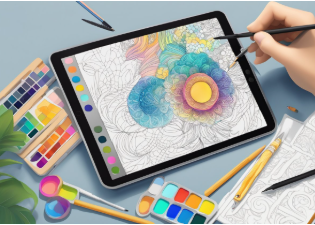In today’s education landscape, technology is transforming the way students learn across all disciplines—including the arts. While artistic expression has traditionally been associated with paintbrushes, clay, and musical instruments, digital tools are now becoming integral to how creativity is both taught and experienced. The integration of technology into arts education is helping students explore new mediums, collaborate more easily, and gain valuable 21st-century skills.
Expanding Artistic Possibilities
Digital platforms allow young artists to create and experiment in ways that were once impossible in a traditional classroom setting. Students can use tablets and styluses to draw or paint with precision, animation software to bring their stories to life, and digital audio workstations to compose and edit music. These tools provide instant feedback, endless revisions, and the opportunity to try multiple techniques without wasting physical resources.
Supporting Inclusive Learning
Technology makes arts education more accessible to diverse learners. Students with different learning needs or physical limitations can use assistive tools to engage in creative expression. Voice-to-text, touch-screen devices, and screen readers are just a few examples of how technology ensures that every learner has the opportunity to participate meaningfully in artistic endeavors.
Encouraging Collaboration and Sharing
With the help of online platforms, students can collaborate on projects regardless of their location. Virtual galleries, shared music studios, and collaborative filmmaking software allow students to work together and showcase their talents beyond the classroom. This sense of connected creativity not only enhances skills but also builds confidence and community.
Enhancing Feedback and Portfolio Development
Digital portfolios give students the ability to organize and present their work professionally. Teachers can offer more detailed and timely feedback using digital annotations, voice notes, or video commentary. This interactive feedback loop helps students reflect on their growth and development as artists.
Preparing Students for Creative Careers
As the arts increasingly intersect with technology in professional fields—from digital design to film production and game development—students benefit from learning tech-based tools early. Arts programs that incorporate technology help learners build a foundation that can support future careers in both traditional and emerging creative industries.
Conclusion
Integrating technology into arts education is not about replacing traditional methods—it’s about enhancing the ways in which students explore and express creativity. By embracing digital tools, educators can open new pathways for artistic development, equity, and innovation. This thoughtful blend of art and technology prepares students to thrive creatively in a digitally connected world.














